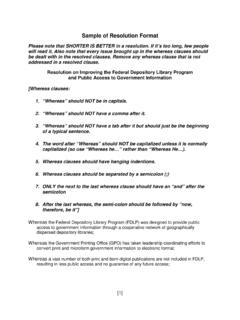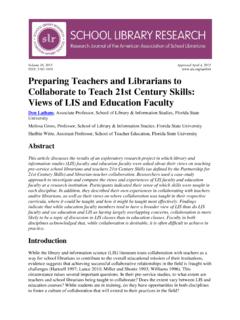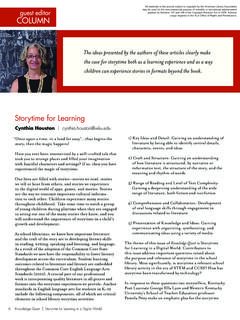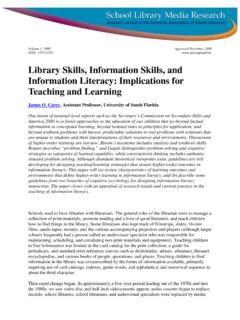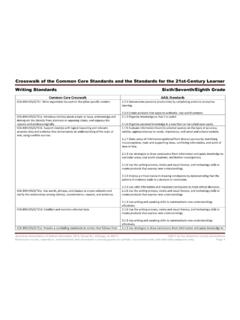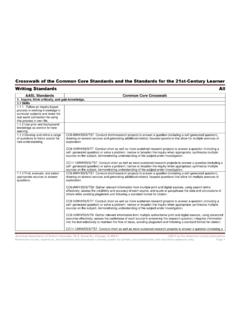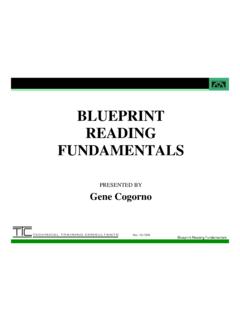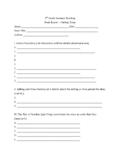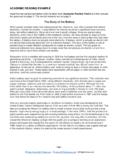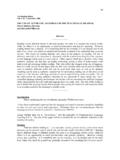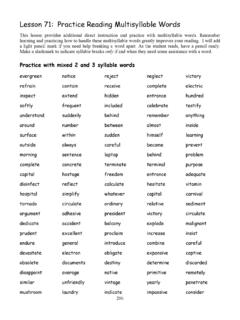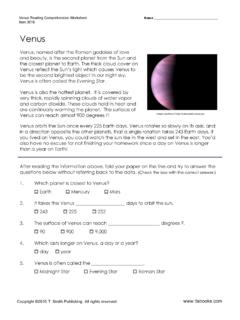Transcription of Independent Reading and School Achievement - …
1 Volume 3, 2000 Approved November 2000. ISSN: 1523-4320 Independent Reading and School Achievement Bernice E. Cullinan, New York University Printed with permission from the Department of Education. This manuscript was commissioned as part of a national study, Assessment of the Role of School and Public Libraries in Support of Educational Reform, Westat, Inc., 1998 2000. This paper is a review of the research literature about the effects of Independent Reading on School Achievement and the identification of common factors in programs designed to promote Independent Reading . The purpose of the review is to provide information to policy makers, curriculum developers, parents, teachers, and librarians about the importance of Independent Reading and programs that support it. Section 1 defines Independent Reading and describes its role in learning.
2 Section 2 surveys research studies and evaluation reports assessing the effects of Independent Reading on learners. Section 3 describes programs designed to promote Reading in schools, homes, and libraries. Sections 2 and 3 are organized by the age or grade level of the learners: preschool and kindergarten, primary and elementary grades, and middle School and young adults. What Is Independent Reading ? Why Is It Important? Independent Reading is the Reading students choose to do on their own. It reflects the reader's personal choice of the material to be read as well as the time and place to read it. Independent Reading is done for information or for pleasure. No one assigns it; no one requires a report; no one checks on comprehension. Independent Reading is also called voluntary Reading (Krashen 1993; Short 1995; Morrow 1991), leisure Reading (Greaney 1980), spare time Reading (Searls 1985), recreational Reading (Manzo and Manzo 1995), and Reading outside of School (Anderson, Wilson, and Fielding 1988).
3 Voluntary Reading involves personal choice, Reading widely from a variety of sources, and choosing what one reads. Aliterates, people who have the ability to read but choose not to, miss just as much as those who cannot read at all. Individuals read to live life to its fullest, to earn a living, to understand what is going on in the world, and to benefit from the accumulated knowledge of civilization. Even the benefits of democracy and the capacity to govern ourselves successfully depend on Reading . Thomas Jefferson believed that informed citizens are the best safeguard against tyranny. He believed that every citizen must know how to read, that it is the public's responsibility to support the teaching of Reading , and that children should be taught to Volume 3 | ISSN: 1523-4320.
4 Read during the earliest years of schooling. In a letter to Colonel Edward Carrington, Jefferson (1787) wrote: The basis of our government being the opinion of the people, the very first object should be to keep that right; and were it left to me to decide whether we should have a government without newspapers, or newspapers without a government, I should not hesitate a moment to prefer the latter.. Research indicates, however, that many students do not choose to read often or in great quantities. In recent years scholars from a variety of disciplines have studied the amount of time students choose to read and the effect of literacy on cognitive functions. In a series of studies involving hundreds of students, Morrow and Weinstein (1986) found that very few preschool and primary grade children chose to look at books during free-choice time at School .
5 Greaney (1980). found that fifth-grade students spent only percent of their out-of- School free time engaged in Reading , and 23 percent of them chose not to read at all. Anderson, Fielding, and Wilson (1988). found that students spend less than 2 percent of their free time Reading . Furthermore, as students get older, the amount of Reading they do decreases. The premise that literacy is associated with School Achievement , participation in a democracy, and self-fulfillment is widely held. Why then don't students read more? Some suggest that the way Reading is taught is not conducive producing students who love to read. In a study for UNESCO, Irving (1980) found that most respondents made no association whatsoever between Reading and pleasure. Many teachers of language arts, recognizing the value of Independent Reading , immerse students in real literature from their earliest encounters with print and establish sustained silent Reading time in their classrooms.
6 According to Anderson, Fielding, and Wilson (1988), students who begin Reading a book in School are more likely to continue to read outside of School than students who do not begin a book in School . However, research also suggests that some teachers are not knowledgeable about children's literature; they are not able to introduce students to the wealth of books available, and they may not recognize the effects of their teaching methods on students'. attitude toward Reading (Short and Pierce 1990). The common sense notion that students who do a substantial amount of voluntary Reading demonstrate a positive attitude toward Reading is upheld in both qualitative and quantitative research (Long and Henderson 1973; Greaney 1980; Hepler and Hickman 1982; Greaney and Hegarty 1987; Reutzel and Hollingsworth 1991; Shapiro and White 1991; Mathewson 1994.)
7 Barbieri 1995; Short 1995). Students' Reading Achievement has been shown to correlate with success in School and the amount of Independent Reading they do (Greaney 1980; Anderson, Fielding and Wilson 1988). This affirms the predictability of a success cycle: we become more proficient at what we practice (Cullinan 1992). Longitudinal studies that show long-term effects or that isolate the exercise of literacy, however, are missing from the research on voluntary Reading and School Achievement . Such studies might indicate which factors make a difference in establishing lifetime Reading habits and in what influences readers' choice of Reading material, that perhaps could help us plan effective programs. Unfortunately very few case studies set in homes, libraries, or classrooms extend over long periods of time (Morrow 1995), and factors associated with the effects of Reading are not well defined.
8 2 School Library Media Research | Volume 3 | ISSN: 1523-4320. Effects of Independent Reading on Learners The amount of free Reading done outside of School has consistently been found to relate to growth in vocabulary, Reading comprehension, verbal fluency, and general information (Anderson, Wilson, and Fielding 1988; Greaney 1980; Guthrie and Greaney 1991; Taylor, Frye, and Maruyama 1990). Students who read independently become better readers, score higher on Achievement tests in all subject areas, and have greater content knowledge than those who do not (Krashen 1993; Cunningham and Stanovich 1991; Stanovich and Cunningham 1993). Although the correlations are steady, determining the appropriate causal interpretation of the relationships is problematic. This section reviews research on the status of Independent Reading , how it develops across age levels, and how it is encouraged.
9 Preschool and Kindergarten During the 1930s and 1940s educators believed that children should not be taught to read until they were six and a half years old and performed well on Reading readiness tests. This belief was based on a study showing that most children who received formal Reading instruction when they were that age usually succeeded in learning to read (Morphett and Washburne 1931). Inferences made from the study established teaching practices for many years. Later researchers went beyond simple chronological age and looked at the literacy experiences children had during their early years (Wells 1986). Other researchers studied children who learned to read without direct instruction before School entrance (Durkin 1966; Ferreiro and Teberosky 1982; Heath 1982, 1983; Holdaway 1979; Mason 1984; Morrow 1995; Ninio 1980; Taylor 1983; Teale 1984; Teale and Sulzby 1986).
10 Some concluded that children learned to read naturally, although a great deal of supportive and interactive behaviors conducive to the learning were apparent. Overwhelmingly the studies show that children from a variety of socioeconomic backgrounds learn to read early. Children who learn to read before School entrance (about 1 percent of the population) are those who are read to, who have someone to answer their questions, and who like to make marks on paper. They are called paper and pencil kids (Durkin 1966). Studies show clearly that children need not be from privileged homes in order to learn to read early, but they must have access to print and have someone to read to them (Taylor and Dorsey-Gaines 1988). Heath (1982), concluded that the way children interact with books in many homes differs from how they are expected to interact with books in School .

